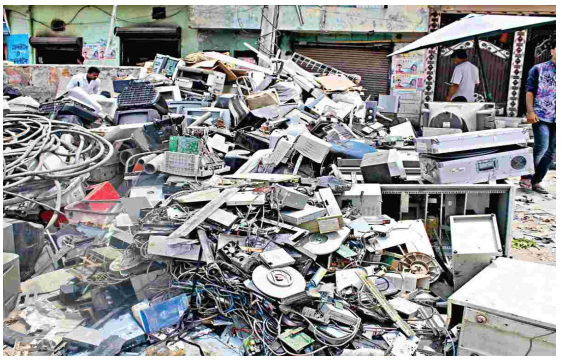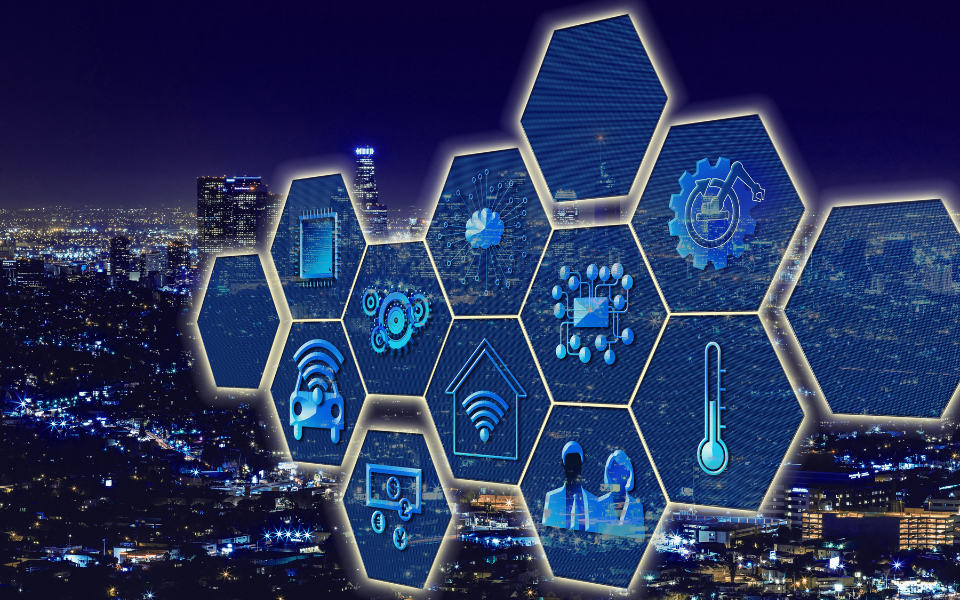- Courses
- GS Full Course 1 Year
- GS Full Course 2 Year
- GS Full Course 3 Year
- GS Full Course Till Selection
- Online Program
- GS Recorded Course
- NCERT (Recorded 500+ Hours)
- Polity Recorded Course
- Geography Recorded Course
- Economy Recorded Course
- AMAC Recorded Course
- Modern India, Post Independence & World History
- Environment Recoded Course
- Governance Recoded Course
- Science & Tech. Recoded Course
- International Relations and Internal Security Recorded Course
- Disaster Management Module Course
- Ethics Recoded Course
- Essay Recoded Course
- Current Affairs Recoded Course
- CSAT
- 5 LAYERED ARJUNA Mentorship
- Public Administration Optional
- ABOUT US
- OUR TOPPERS
- TEST SERIES
- FREE STUDY MATERIAL
- VIDEOS
- CONTACT US
Invisible E-Waste
Invisible E-Waste

Why in News?
On the occasion of International E-Waste Day (14th October), the Waste Electrical and Electronic Equipment (WEEE) Forum commissioned the United Nations Institute for Training and Research (UNITAR) to estimate the annual quantities of invisible e-waste items.
What is Invisible e-waste?
- It refers to electronic waste that often goes unnoticed due to its nature or appearance.
- Many electronic items can fall under this category, such as cables, e-cigarettes, USB sticks, wearable health devices etc.
Some major findings of a recent study are:
-
- Almost 1/6 of the global electronic waste remains unrecognized by the consumers, totalling almost 9 billion kilograms annually.
- Around 35% of invisible e-waste (around 3.2 billion kgs) is generated from the e-toy category, including racing cars, electric trains, drones, and biking computers.
- Around 844 million vaping devices are discarded annually.
- The material value of invisible e-waste is almost USD 9.5 billion each year.
- In the entire world, only a very small percentage of e-waste is properly collected, treated, and recycled. In Europe, almost 55 % of e-waste generated is now officially collected and reported but in many parts of the world, the reported average collection rate is just around 17%.
- Major portion of e-waste ends up in landfills, burned, illegally traded, improperly treated, or hoarded in households.
- Unscientific disposal of invisible e-waste poses a big environmental risk, as hazardous components in these items, such as lead, mercury, and cadmium, can contaminate soil and water, if not appropriately managed.
Recommendations are:
- This invisible e-waste represents a big resource, highlighting the potential for economic gain and the urgent need to raise awareness about recycling of it.
- In 2019, the value of raw materials in the global e-waste was around USD 57 billion and of the total, almost 1/6 or USD9.5 billion in material value each year is the invisible e-waste category.
- To raise awareness to unlock the recycling potential and to meet the growing demand for materials in various strategic sectors.
What are the provisions regarding e-waste in India?
In India, e-waste management is governed by the E-Waste (Management) Rules, 2016, which were introduced under the Environment (Protection) Act, 1986. These rules provide a legal framework for the proper management and handling of electronic waste in the country.
Key provisions regarding E-Waste in India are:
- Definition: The rules define e-waste as "Waste of electrical and electronic equipment, whole or in part, or rejects from their manufacturing and repair process, which are intended to be discarded."
- Extended Producer Responsibility (EPR): EPR is a fundamental principle of the rules. Producers of the electronic equipment are responsible for the environmentally sound management of their products throughout their lifecycle. They are required to establish a collection system and take back e-waste generated from their products.
- E-Waste Management Targets: The rules set collection targets for producers, which are periodically revised by the Central Pollution Control Board (CPCB). Producers are required to collect a certain percentage of the e-waste generated from their products.
- Authorization and Registration: Any person engaged in the manufacture, refurbishment, dismantling, and recycling or involved in the e-waste collection or storage business must obtain authorization from the appropriate authorities.
- E-Waste Collection Centers: The rules specify that collection centers and channels for e-waste should be established and maintained to facilitate the collection of e-waste.
- Environmentally Sound Management: It outline the procedures for the environmentally sound management of e-waste, including storage, transport, and disposal. They also prohibit the use of hazardous substances in the manufacture of electrical and electronic equipment.
- Penalties: Non-compliance with the rules can result in penalties, fines, or imprisonment as specified in the Environment (Protection) Act, 1986.
Note: In 2022, the Government of India released E-Waste (Management) Rules, 2022 with a major aim to digitize the e-waste management process. These rules also restricted the use of hazardous substances (such as lead, mercury, and cadmium) in manufacturing electrical and electronic equipment.
Challenges posed by invisible e-waste are:
-
Environmental Pollution:
- Hazardous Materials: Many electronic devices contain hazardous materials such as lead, mercury, cadmium, and brominated flame retardants. Improper disposal can lead to these toxins entering into the environment, contaminating soil and water sources.
- Air Pollution: Burning it can release toxic fumes into the air, contributing to air pollution and posing health risks to nearby communities.
- Landfill Contamination: If dumped into the landfills, then it can contribute to soil contamination and the release of harmful substances into groundwater.
- Resource Depletion: This waste contains valuable resources like rare metals, copper, and gold. Lack of recycling and disposal methods result in the loss of these resources, driving the need for more mining and resource extraction, which can be environmentally damaging.
- Lack of Awareness: Many consumers and businesses are not fully aware of the environmental and social impacts of this waste.
Addressing these challenges requires a combination of increased awareness, improved recycling and disposal infrastructure, stricter regulations, better product design, extended product lifecycles. It is essential to promote sustainable practices and circular economy principles to mitigate the negative effects of invisible e-waste on the environment and society.
Additional Information:
About WEEE Forum
- It’s an international non-profit association that focuses on the management and treatment of electronic waste.
- This organization was founded in 2002 and is based in Brussels, Belgium.
- It plays a crucial role in promoting responsible and sustainable practices related to the collection, treatment, recycling, and disposal of electronic waste.



